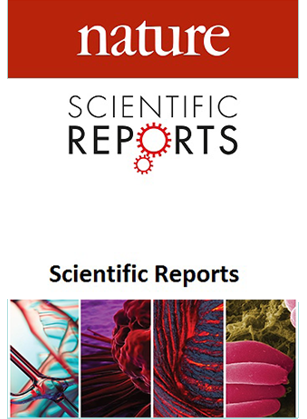半乳糖-8 DNA甲基化通过MAPK/mTOR通路介导巨噬细胞自噬,缓解动脉粥样硬化。
摘要
DNA甲基化修饰是影响动脉粥样硬化(AS)过程的重要机制。既往研究表明,半乳糖凝集素-8 (GAL8) DNA甲基化水平与冠心病猝死或冠心病急性事件相关。然而,AS中GAL8 DNA甲基化和基因表达的机制尚未阐明,我们需要对此进行进一步的研究。采用ApoE-/-小鼠建立动脉粥样硬化模型,采用DNA甲基化抑制剂DO05和MAPK/mTOR抑制剂UO126进行干预。采用焦磷酸测序检测各组小鼠主动脉GAL8 DNA甲基化水平的变化。采用ROC曲线分析评价GAL8 DNA甲基化与动脉粥样硬化的关系。采用苏木精伊红主动脉染色(H&E)观察主动脉内膜、斑块面积及斑块内继发病变特征。油红O染色检测小鼠动脉斑块或巨噬细胞的脂质沉积。Movat染色检测斑块中泡沫细胞的数量。免疫组织化学(IHC)和Western blot检测DNA甲基转移酶1 (DNMT1)、GAL8、MAPK/mTOR通路蛋白、轻链3 (LC3)、Beclin1、Sequestosome1 (p62)、肿瘤坏死因子-α (TNF-α)等蛋白的定位和表达水平。免疫荧光法(IF)检测GAL8、LC3、单核细胞趋化蛋白-1(MCP-1)等蛋白的荧光强度。透射电镜检测巨噬细胞的自噬体。用人单核细胞THP-1诱导泡沫细胞模型,并使用靶向GAL8、DO05和UO126的sirna与泡沫细胞共培养。Western blot检测DNMT1表达水平;采用油红O染色检测各组泡沫细胞内脂质沉积,Western blot定量检测GAL8、MAPK/mTOR通路蛋白、LC3、Beclin1、p62、TNF-α的定位和表达水平。免疫荧光法(IF)检测GAL8、MAPK/mTOR通路蛋白、LC3、p62、TNF-α等蛋白的荧光强度。GAL-8启动子区域包含6个易受DNA甲基化影响的CpG位点。DNMT1抑制后,与C57和AS组相比,DC05组在所有六个CpG位点上的甲基化显著降低。相反,与AS组相比,UO126组在前三个CpG位点的甲基化增加。ROC曲线分析显示,GAL8 DNA甲基化是动脉粥样硬化的独立危险因素:GAL8与炎症相关蛋白MCP-1、MMP9和TNF-α在小鼠病变组中表达上调,而自噬相关蛋白LC3和Beclin1表达下调。此外,在小鼠动脉粥样硬化模型中检测到磷酸化的MAPK/mTOR通路蛋白。抑制GAL-8 DNA甲基化水平后,小鼠体内GAL-8表达上调,巨噬细胞自噬受到抑制,炎症反应增加,动脉粥样硬化病变加重。直接抑制MAPK/mTOR通路活性后,巨噬细胞自噬进一步减弱,炎症反应进一步加重,小鼠动脉粥样硬化病变进一步加重。用泡沫细胞特异性敲低GAL-8后,上述现象逆转,促进巨噬细胞自噬,减轻炎症反应,减轻动脉粥样硬化程度。GAL8 DNA甲基化程度与动脉粥样硬化的进展有关,其低甲基化可加重动脉粥样硬化病变。其机制可能是通过调控MAPK/mTOR通路,减缓巨噬细胞的自噬,进而加重斑块内的炎症。靶向GAL8 DNA甲基化可能成为动脉粥样硬化诊断和治疗的新靶点。DNA methylation modifications are an important mechanism affecting the process of atherosclerosis (AS). Previous studies have shown that Galectin-8 (GAL8) DNA methylation level is associated with sudden death of coronary heart disease or acute events of coronary heart disease. However, the mechanism of GAL8 DNA methylation and gene expression in AS has not been elucidated, prompting us to carry out further research on it. ApoE-/- mice were used to establish an atherosclerosis model, and DNA methylation inhibitor DO05 and MAPK/mTOR inhibitor UO126 were used for intervention. Pyrosequencing was used to detect changes in GAL8 DNA methylation levels of the mouse aorta between groups. ROC curve analysis was performed to assess the relationship between GAL8 DNA methylation and atherosclerosis. Aortic staining with hematoxylin and eosin (H&E) was used to observe the aortic intima, plaque area, and characteristics of secondary lesions within the plaque. Oil Red O staining was used to detect lipid deposition in mouse arterial plaques or macrophages. Movat staining was used to detect the number of foam cells in the plaque. Immunohistochemistry (IHC) and Western blot were used to quantify the localization and expression levels of DNA methyltransferase1 (DNMT1), GAL8, MAPK/mTOR pathway proteins, Light Chain3 (LC3), Beclin1, Sequestosome1 (p62), Tumor Necrosis Factor-α (TNF-α), and other proteins. Immunofluorescence (IF) was used to detect the fluorescence intensity of GAL8, LC3, Monocyte chemoattractant protein-1(MCP-1), and other proteins. Detection of autophagosomes in macrophages by transmission electron microscopy was also performed. The foam cell model was induced with human monocytes (THP-1) and co-cultured with foam cells using siRNAs targeting GAL8, DO05, and UO126. The level of DNMT1 was detected by Western blot; Oil red O staining was used to detect lipid deposition in foam cells in each group, and the localization and expression levels of GAL8, MAPK/mTOR pathway proteins, LC3, Beclin1, p62, and TNF-α were quantitatively determined by Western blot. Immunofluorescence (IF) was used to detect the fluorescence intensity of GAL8, MAPK/mTOR pathway protein, LC3, p62, TNF-α, and other proteins. The GAL-8 promoter region harbors six CpG sites susceptible to DNA methylation. Following DNMT1 inhibition, the DC05 group displayed a significant decrease in methylation across all six CpG sites compared to the C57 and AS groups. Conversely, the UO126 group exhibited increased methylation at the first three CpG loci relative to the AS group. ROC curve analysis revealed GAL8 DNA methylation as an independent risk factor for atherosclerosis: GAL8, along with inflammation-related proteins MCP-1, MMP9, and TNF-α, were upregulated in the mouse lesion group, while expression of autophagy-related proteins LC3 and Beclin1 was downregulated. Additionally, phosphorylated MAPK/mTOR pathway proteins were detected in the mouse model of atherosclerosis. After inhibiting the methylation level of GAL-8 DNA, the expression of GAL-8 was up-regulated, macrophage autophagy was inhibited, inflammation was increased, and atherosclerotic lesions in mice were aggravated. After direct inhibition of the activity of the MAPK/mTOR pathway, macrophage autophagy was further weakened, the inflammatory response was further aggravated, and the atherosclerotic lesions of mice were further aggravated. After the specific knockdown of GAL-8 using siRNA GAL-8 using foam cells, the above phenomenon was reversed, macrophage autophagy was promoted, the inflammatory response was reduced, and the degree of atherosclerosis was alleviated. The degree of GAL8 DNA methylation is related to the progression of atherosclerosis, and its hypomethylation can aggravate atherosclerotic lesions. The mechanism may be through the regulation of MAPK/mTOR pathway to slow down the autophagy of macrophages, and then aggravate the inflammation in plaques. Targeting GAL8 DNA methylation may be a new target for the diagnosis and treatment of atherosclerosis.

 求助内容:
求助内容: 应助结果提醒方式:
应助结果提醒方式:


